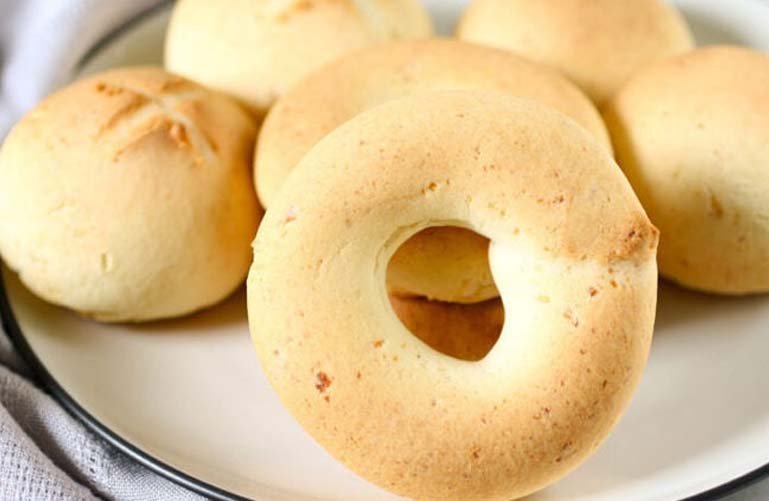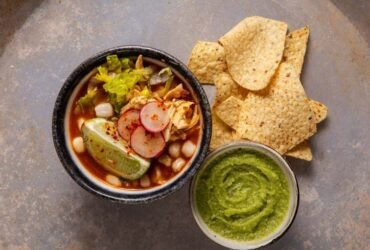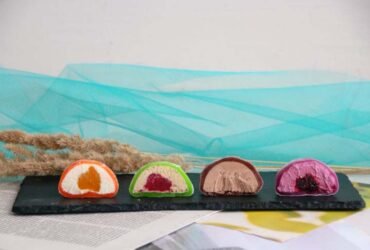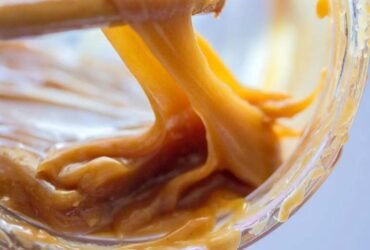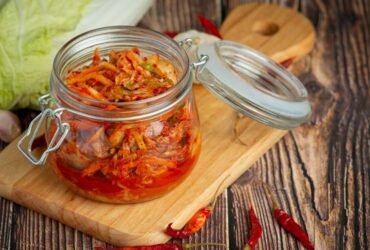Homemade pandebono is a delicious cheese roll originally from Colombia. It is a perfect accompaniment for breakfast or any time of day. Although you can find pandebono in many bakeries, nothing compares to the taste and texture of a freshly baked homemade pandebono. In this article, we will teach you how to make homemade pandebono in just a few steps.
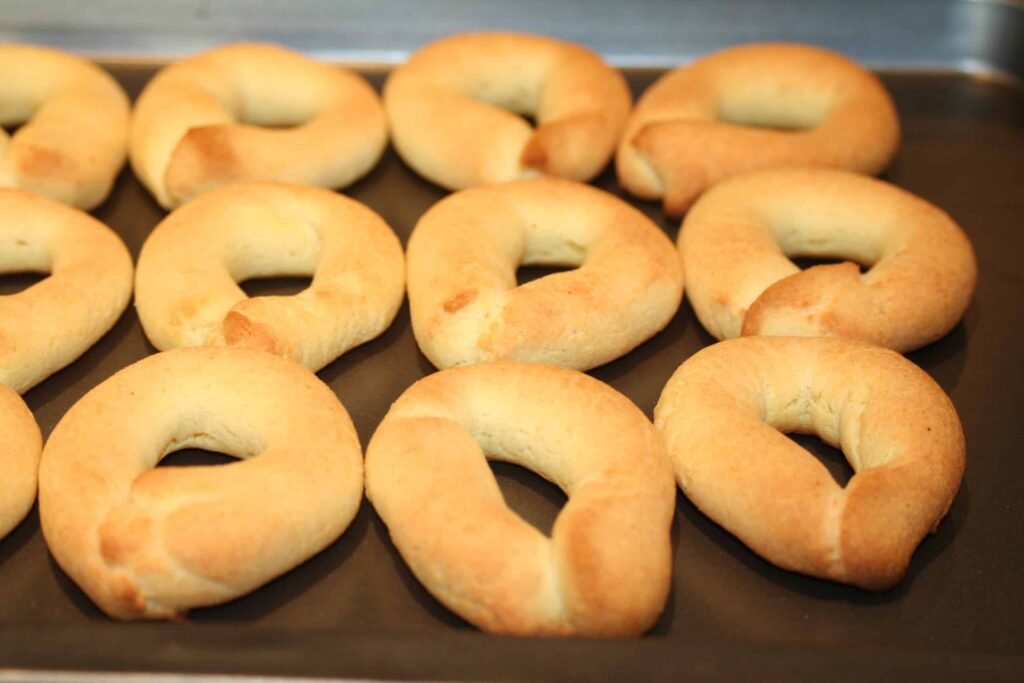
Ingredients for homemade pandebono:
To make homemade pandebono, you will need the following ingredients:
- 2 cups of cassava starch
- 1 cup of grated cheese
- 1/2 cup cornstarch
- 1/2 cup of milk
- 2 eggs
- 1 teaspoon baking powder
- 1/4 cup vegetable oil
- Salt to taste
Instructions to make pandebono cacero:
- Preheat the oven to 400 degrees Fahrenheit.
- In a large bowl, mix the cassava starch, grated cheese, cornstarch, baking powder and salt.
- Add the milk, eggs and vegetable oil. Mix well until a soft dough forms.
- With wet hands, form dough into balls the size of a golf ball.
- Place the dough balls on a baking sheet lined with parchment paper.
- Bake for 15-20 minutes or until the pandebonos are golden.
- Serve hot and enjoy.
Congratulations! You have learned how to make homemade pandebono in just a few steps. This recipe is easy to follow and produces delicious, fluffy pandebono. Now you can surprise your friends and family with a freshly baked cheese roll. Enjoy!
Homemade Pandebono and the health benefits
Pandebono is a traditional Colombian bread, made mainly with corn flour, cassava starch, cheese and eggs. Although it is a culinary delight, it is not necessarily considered a particularly healthy food. However, it has some nutritional benefits and can be part of a balanced diet in moderate amounts. Here are some things to consider:
- Power source: Pandebono contains carbohydrates from corn flour and cassava starch, which makes it a good source of energy.
- Protein: The cheese used in the pandebono recipe provides protein, which is important for building and repairing tissues in the body.
- Calcium: Cheese is also a source of calcium, which is essential for healthy bones and teeth.
- Fiber: Although to a lesser extent, cassava starch may provide some fiber, which is beneficial for digestive health.
- Moderation in fat and calories: Pandebono generally contains a moderate amount of fat and calories. However, its nutritional profile may vary depending on the specific recipe and ingredients used.
However, it is important to note that pandebono can also contain significant amounts of saturated fat and sodium, especially depending on the type and amount of cheese used. Excess consumption of these nutrients can contribute to health problems such as obesity, heart disease, and high blood pressure.
In short, pandebono is a delicious option to enjoy from time to time, but as with any food, it should be consumed in moderation as part of a balanced diet and healthy lifestyle. It is always good to opt for homemade versions instead of commercial ones, since you have better control over the ingredients and their nutritional quality.
History of Homemade Pandebono
The history of homemade pandebono has its roots in the rich cultural diversity of Colombia, specifically in the Andean region of the country. Although there is no exact date of its origin, it is believed that pandebono has influences dating back to colonial times and has developed over the centuries.
The pandebono recipe is a fusion of different culinary traditions. Its main ingredients, such as corn flour, cassava starch, cheese and eggs, reflect the abundance of agricultural products in the Andean region of Colombia. These ingredients have both indigenous and European roots.
new ingredients and culinary techniques in Latin America. The Spanish brought with them wheat, cheese and baking techniques, which influenced the creation of different types of bread in the region. It is thought that pandebono could have emerged as a local adaptation of these influences, using native ingredients such as corn and cassava.
Over time, the pandebono recipe evolved in Colombian households, adapting to local tastes, available ingredients, and family traditions. Today, homemade pandebono is an integral part of Colombian cuisine and is enjoyed throughout the country as a delicious, comforting bread that reflects Colombia's cultural diversity.
Maybe you might like: Pasta with tomato sauce and meatloaf
Image credits: freepik


